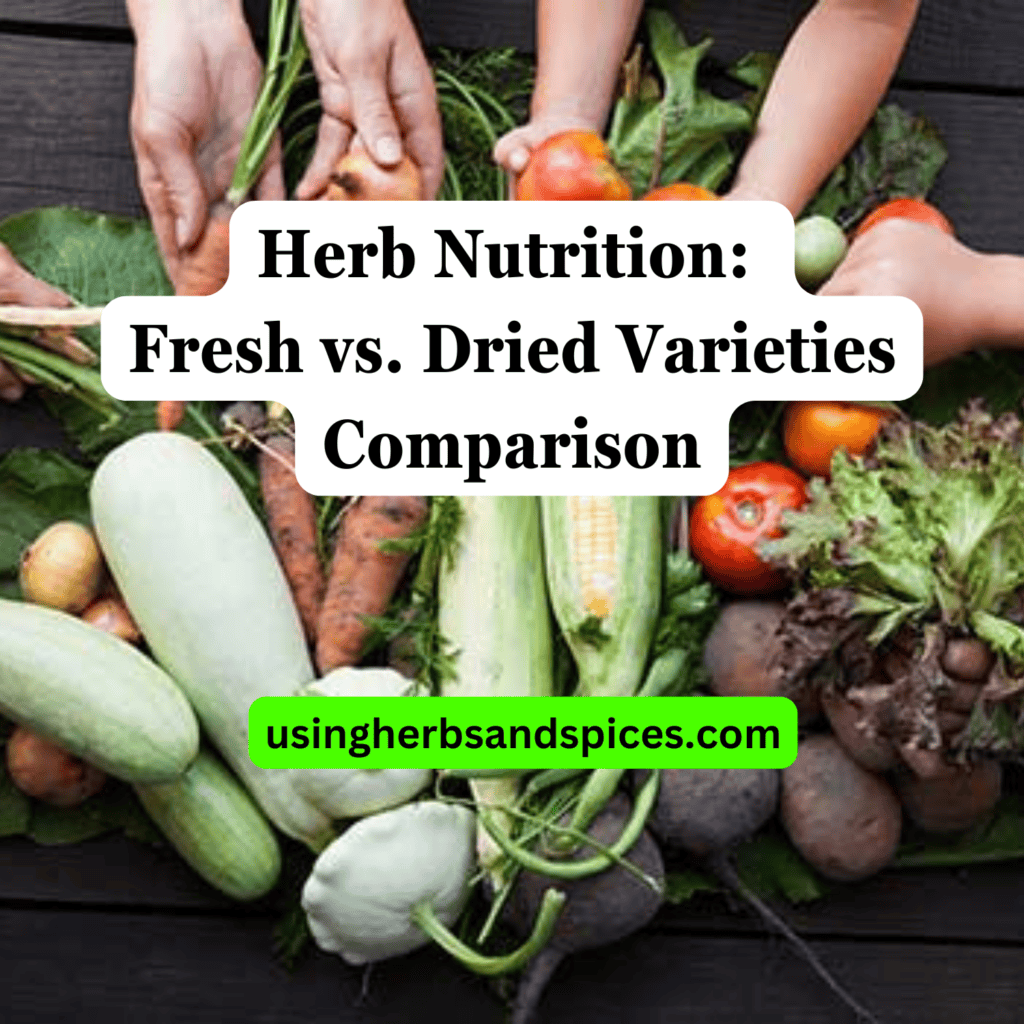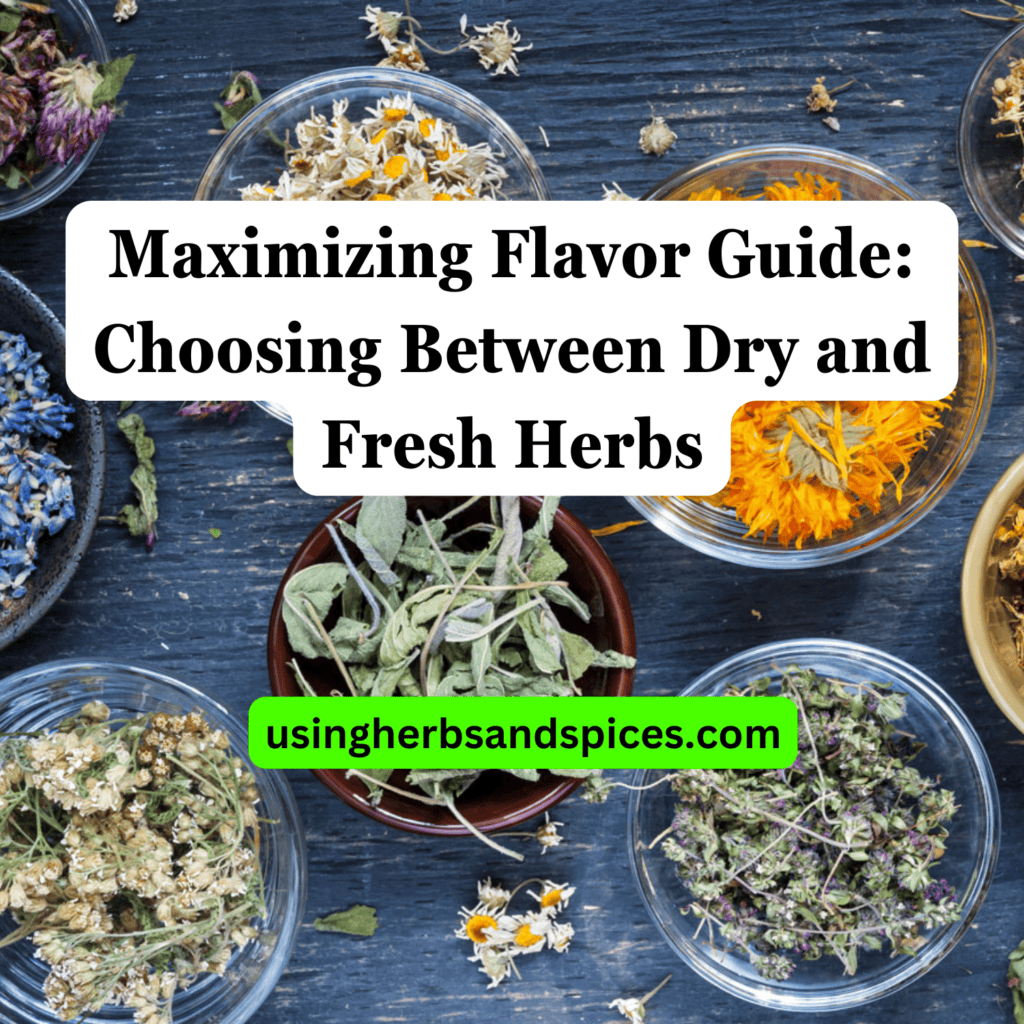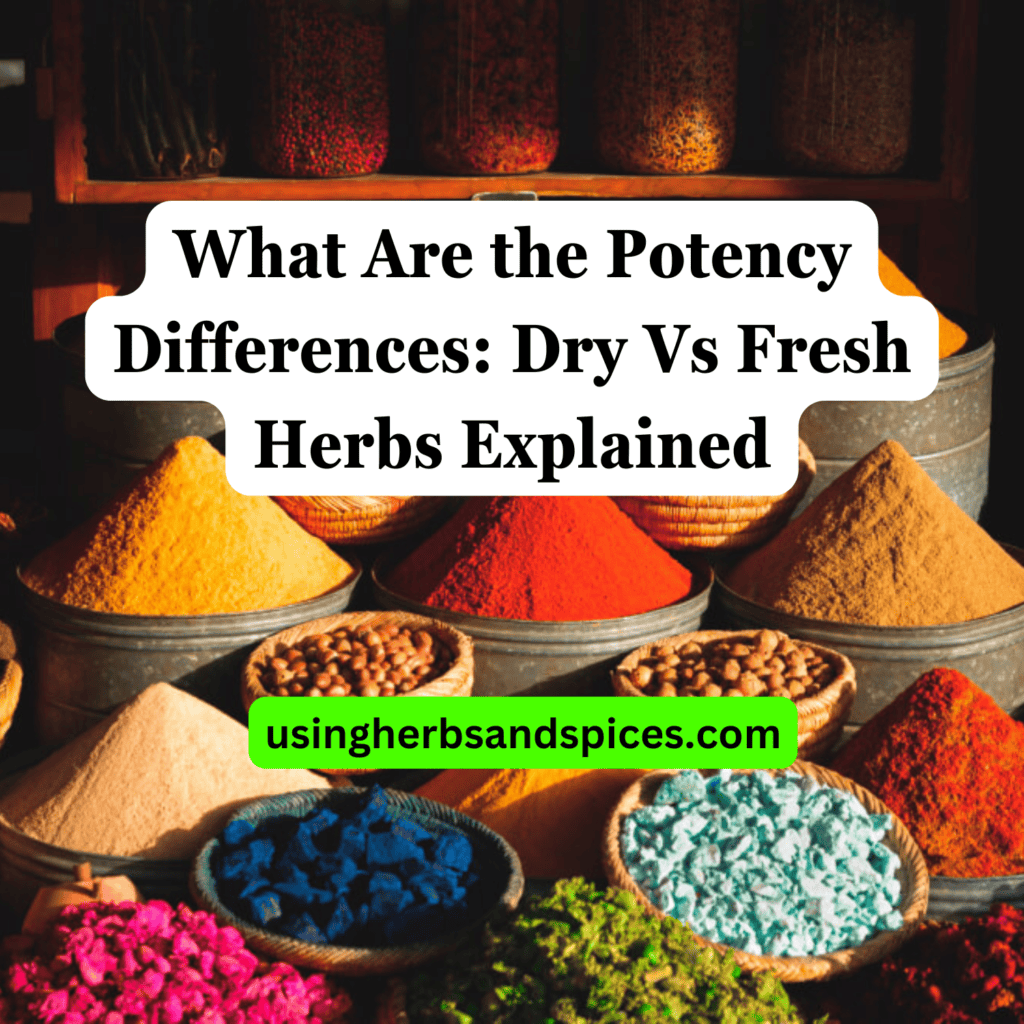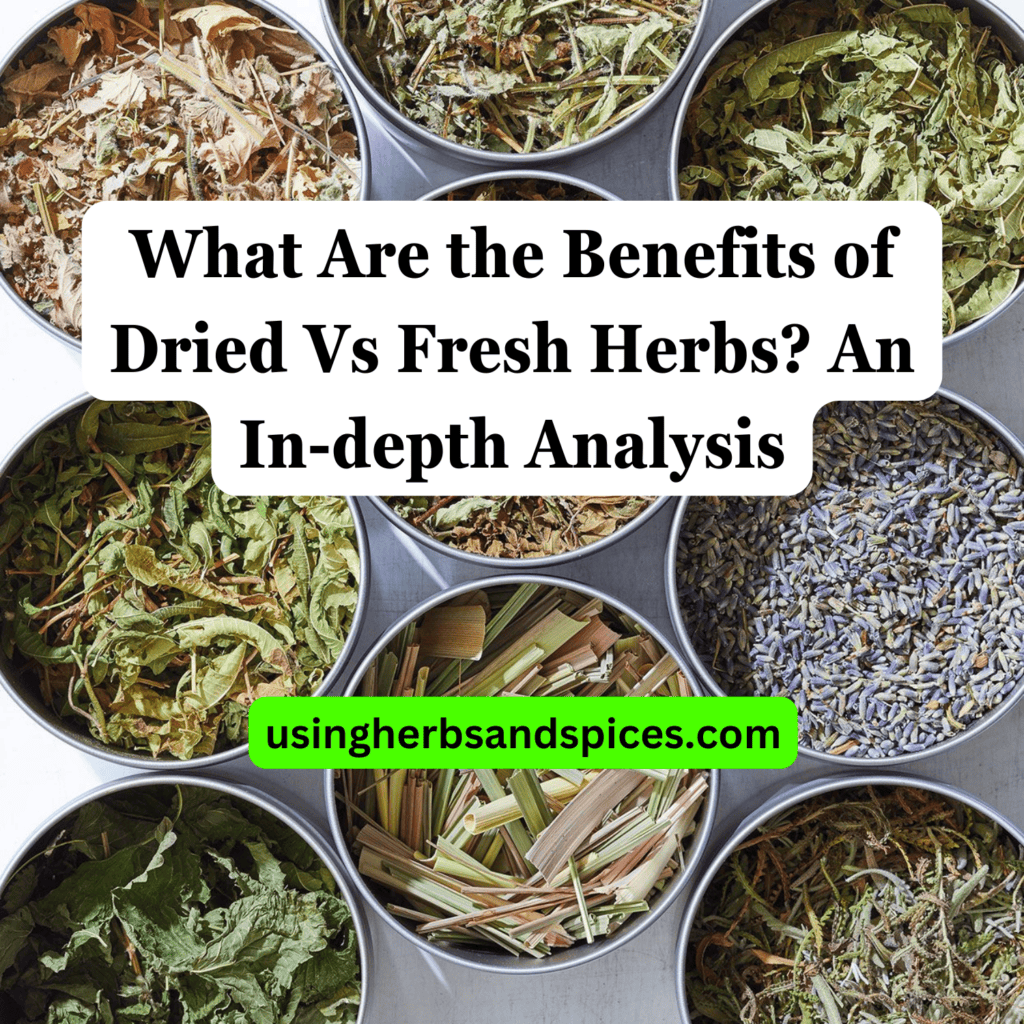SUMMARY: Dry herbs offer a concentrated flavor and longer shelf life, making them cost-effective and versatile for many dishes. Fresh herbs provide a brighter taste and are best used when their full, vibrant flavor is essential to a recipe’s success.
Ever wondered if your dishes could taste better with fresh instead of dried herbs?

You’re not alone, and there’s quite a bit to consider when choosing between fresh and dry.
- Understanding Herbs Potency
- The Case for Fresh Herbs
- The Advantages of Dry Herbs
- Direct Comparison: Dry Vs Fresh Herbs
Keep reading to discover how to unlock the full potential of herbs in your cooking.
Understanding Herbs Potency
The potency of herbs, whether dry or fresh, is a critical factor that influences their culinary effectiveness. Essentially, an herb’s potency is determined by its flavor profile, the concentration of essential oils, and its overall impact on a dish. When herbs are dried, they lose moisture, which can lead to a concentration of flavor. However, some volatile oils also diminish over time, affecting the herb’s original essence. Fresh herbs, on the other hand, contain vibrant oils that offer a burst of flavor, though they require larger quantities to match the intensity found in their dried counterparts.
Furthermore, the method of drying and the age of both dry and fresh herbs contribute significantly to their potency. Properly stored dried herbs can retain significant flavor for months, while fresh herbs have a shorter shelf life but provide a fresher taste. The decision between using dry or fresh herbs can alter the outcome of a recipe significantly, making it crucial to understand how each form affects the dishes they are used in.
The Case for Fresh Herbs
When considering the use of fresh herbs, it is important to recognize their unparalleled vibrancy and their ability to elevate a dish with a burst of fresh flavor that is hard to replicate with their dried counterparts. Fresh herbs often contain higher moisture content, which can contribute to a sense of freshness in culinary applications. This is particularly evident in dishes where herbs play a central role, such as in pesto, salads, or garnishes.
Nutritionally, fresh herbs can be superior due to their higher levels of essential oils and vitamins that are crucial for health. These natural oils are responsible for the aromatic qualities of herbs that can enhance the sensory experience of eating. Moreover, the process of drying can reduce some of the nutritional content of herbs, making fresh herbs a healthier option in some cases.
From a culinary perspective, fresh herbs are best used in recipes where their flavor can stand out without being subjected to prolonged cooking times, which can diminish their potency and character. They are particularly suited to finishing dishes, offering a burst of flavor and color that can elevate a meal from good to extraordinary.
However, it’s worth noting that the availability of fresh herbs can be limited by seasonality and regional factors, which can affect their price and accessibility. Additionally, fresh herbs typically have a shorter shelf life than their dried counterparts, requiring proper storage methods, such as refrigeration, to maintain their freshness and potency.
The Advantages of Dry Herbs
Diving into why dried herbs are important, their concentrated flavors, shelf-life, and their unique roles in cooking and seasoning. Dried herbs are a staple in kitchens worldwide for good reason. Their concentrated flavor means a little goes a long way, making them an economical choice for many. When herbs are dried, the process removes moisture, concentrating their essential oils and, therefore, their flavors and aromas. This concentration allows dried herbs to impart robust tastes to dishes, even in small quantities.
Moreover, the shelf-life of dried herbs far surpasses that of their fresh counterparts. Properly stored dried herbs can maintain their potency for years, offering a reliable flavoring option without the frequent shopping trips required for fresh herbs. This extended shelf-life not only reduces waste but also ensures that a wide array of herbs is readily available at any time, making it easier to experiment with different cuisines and flavors.
Another significant advantage of dried herbs is their versatility. They are particularly suited for longer cooking processes, such as stewing, braising, or slow-cooking. During these cooking methods, the prolonged exposure to heat gradually draws out the flavors of dried herbs, infusing the dish with depth and complexity. Furthermore, dried herbs can be rehydrated, if necessary, by soaking in a liquid, expanding their use beyond just dry rubs and mixes into marinades and sauces.
In conclusion, the importance of dried herbs in cooking cannot be overstated. Their concentrated flavors, extended shelf-life, and versatility in culinary applications make them an indispensable tool for both novice cooks and seasoned chefs alike.
Direct Comparison: Dry Vs Fresh Herbs
An analytical comparison of dry and fresh herbs in terms of potency, cost, availability, and culinary uses. When comparing the potency of dry and fresh herbs, it’s widely recognized that dried herbs possess a more concentrated flavor. This concentration means that when substituting one for the other, the general rule of thumb is to use one part dried herb to three parts fresh. However, the potency of dried herbs diminishes with time, while fresh herbs offer a burst of flavor that’s unparalleled when added towards the end of cooking or as a garnish.
From a cost perspective, dried herbs can be more economical in the long run due to their extended shelf life and the smaller quantities required for flavoring dishes. Fresh herbs, though initially more expensive and perishable, provide a freshness and vibrancy in flavor that can elevate a dish significantly.
In terms of availability, dried herbs are accessible year-round and can be stored easily, making them a convenient option. Fresh herbs, on the other hand, may be seasonal and often require proper storage conditions to prolong their usability. Their shelf life is significantly shorter, which might limit their use outside of their growing season without resorting to preserved forms.
Culinarily, dried herbs are best utilized in dishes that cook for longer periods, allowing their flavors to meld and permeate the dish. Fresh herbs shine in recipes that benefit from a fresh, vibrant flavor profile, especially in salads, dressings, and as garnishes. Some herbs, like basil, cilantro, and chervil, often prefer the fresh route to retain their characteristic zest, whereas herbs like oregano, thyme, and rosemary can be used effectively in both fresh and dried forms, depending on the desired outcome of the dish.
In the end, the choice between dry and fresh herbs hinges on the specific needs of the dish, personal taste preferences, and the availability of the herbs. An understanding of the unique attributes and best uses of each can guide cooks and chefs in making informed choices that elevate their culinary creations.
Maximizing Herb Potency
In delving into the nuances of dry versus fresh herbs potency, we’ve uncovered valuable insights for every culinary enthusiast.
- The potency of herbs is significantly influenced by their form, with dried herbs often having a more concentrated flavor than their fresh counterparts.
- Fresh herbs are best used when the dish calls for a burst of flavor and when they are to be consumed shortly after preparation.
- Dried herbs offer an extended shelf life and enhanced convenience, making them ideal for longer cooking processes or when fresh options are not available.
- When choosing between dry and fresh herbs, consider factors such as the desired intensity of flavor, the cooking method, and the availability of the herbs.
Ultimately, the choice between dry and fresh herbs depends on the specific needs and preferences of each dish. By understanding the unique advantages of each, you can make informed decisions that elevate your culinary creations.
Expert-Verified Guide: Dry Vs Fresh Herbs Potency FAQs
What are the shelf lives of dry vs fresh herbs?
The shelf life of fresh herbs varies, typically lasting up to a few weeks when stored properly in the refrigerator. Dried herbs, on the other hand, can last much longer, often up to a year or more if kept in a cool, dark, and dry place. It’s essential to check for any signs of spoilage or diminished aroma as these indicate the herbs are past their prime.
How do I properly store fresh and dried herbs?
Fresh herbs should be stored in the refrigerator; some can be kept in a glass of water, much like cut flowers, while others do best when loosely wrapped in a damp paper towel. Dried herbs require a dry, dark storage space in an airtight container. For both types, avoiding exposure to heat, light, and moisture is key to preserving their flavor and potency.
Can you substitute fresh herbs with dry ones in recipes? If so, how?
Yes, you can substitute fresh herbs with dry ones and vice versa, but the ratio is important. A general guideline is to use one part dried herb to three parts fresh herb, owing to the greater potency of dried herbs. However, taste adjustment is recommended during cooking, as potency varies with the type of herb and its storage time.
Are there any herbs that are better used fresh than dried, or vice versa?
Some herbs, like cilantro, basil, and parsley, generally offer better flavor when used fresh, especially in raw or lightly cooked dishes. On the other hand, woody herbs like rosemary, thyme, and oregano retain their flavor well when dried and can be used in longer cooking processes without losing their essence. Ultimately, the choice can depend on personal preference and the intended use in a specific dish.









